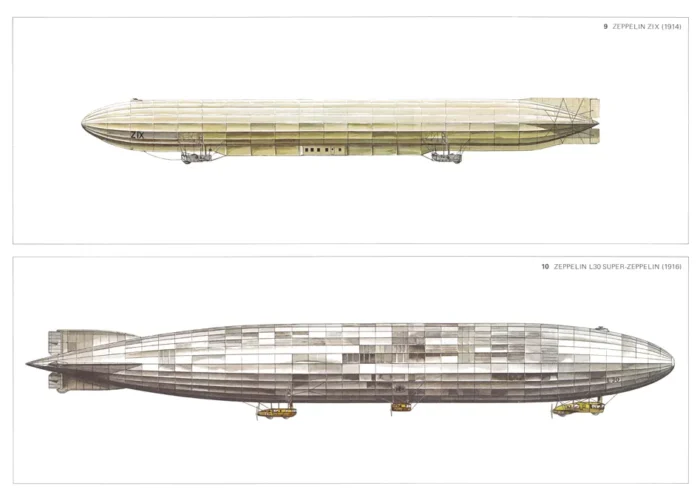(a) Zeppelin ZI X
(b) Zeppelin L30 (Super-Zeppelin)
£12.50
(a) Zeppelin ZI X:the first to incorporate a simplified cruciform tail unit
(b) Zeppelin L30 Super-Zeppelin: six-engined, two thousand cubic feet ships were the largest in the world when they appeared
(scroll down for a more detailed Description)
Print published 1973 by Hugh Evelyn; drawn by Peter W.M. Griffin
Print size: c. 34 x 24 cm [13″ x 9″] may vary slightly from the printers’ cut 50 years ago)
Printed on high white matt cardstock of 115 g/m²
Print is STANDARD size – shipping is the same for 1 to 10 prints (based on largest print size in your order) – see Shipping & Returns.
In stock
Description
(a) Zeppelin ZI X, 1914: On the outbreak of war there was a sudden urgent requirement for more Zeppelins for both the Army and Navy. To meet this demand, the interim three-engined L3 Class (final development of the L1 Improved Schwaben Class) was built in quantity to existing designs while better, more powerful, airships were developed. These emerged in 1915 as the four-engined L10 Class. ZI X was the second L3 Class ship and the first to incorporate a simplified cruciform tail unit which later became standard. Destroyed in its hangar at Düsseldorf on 8 October 1914 by bombs dropped by Flt Lt. (later Air Vice Marshal) Reginald Marix, RNAS flying a Sopwith Tabloid.
(b) Zeppelin L30 Super-Zeppelin, 1916: The L30 Class was probably the most successful design in the whole 40 years of rigid airship development. It represented an optimum compromise of efficient structure, good aerodynamic shape, and ease of manufacture. Only its larger size proved a handicap in handling on the ground. These six-engined, two thousand cubic feet ships were the largest in the world when they appeared. Their classic design was the basis, in due course, of several later classes of Zeppelin as well as of rigids built in Britain and the United States. Ten raids on England dropping a total of 23,305 kilograms (51,379 lb) of bombs; 31 reconnaissance missions above the North and Baltic Seas and at the Eastern Front.
Additional information
| Weight | 0.0115 kg |
|---|---|
| Dimensions | 34 × 24 cm |





